
With a grant from the Gordon and Betty Moore Foundation to AstronetX, a student team with members from the SETI Institute’s REU program, Louisiana State University, and Mississippi State University has developed a science plan for the first lunar telescope, L-CAM1.
L-CAM1 will capture images for research in astrophysics, planetary science and planetary defense. Dr. Franck Marchis, a senior planetary astronomer at the SETI Institute, leads the SETI Institute's involvement. In addition to Marchis, Dr. Tabetha Boyajian (LSU) leads the science team with Dr. Matthew Penny (LSU) and Dr. Angelle Tanner (MSU).
- Space Daily: SETI’s plan for a sky-monitoring telescope on the moon
- BIS News Post: Designing a science program for sky-monitoring telescope based on the moon
- WJTV: Mississippi State faculty researcher collaborates on new telescope launch
- SETI.org: SETI Institute Teams Up to Help Students Design Science Program for Sky-Monitoring Telescope Based on the Moon
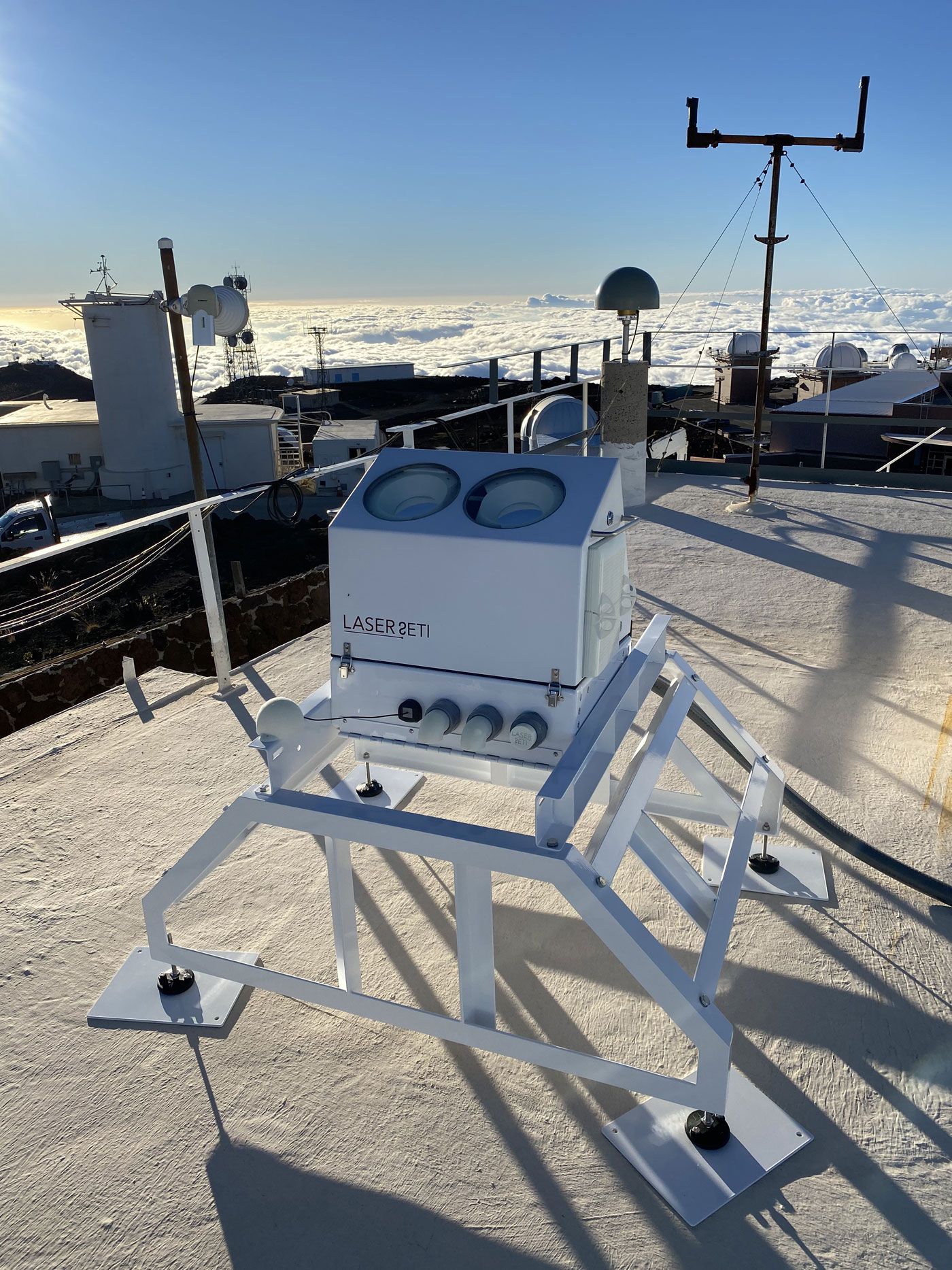
LaserSETI Installs Second Detector in Hawai’i
The SETI Institute’s LaserSETI program celebrated a new milestone with a second instrument at the Haleakala Observatory that permits observation of the entire night sky. The new device views the eastern sky while the original installation at the Robert Ferguson Observatory in Sonoma, California, looks west.
The two devices combined can scan a 150-degree arc of the night sky more than a thousand times a second to detect laser pulses, which could be a potential sign of intelligent life.
- Daily Nation Today: Here’s how tiny lasers could help us find alien life
- SETI.org: LaserSETI Installs 2nd Observatory at Haleakala Observatory
- SETI.org: LaserSETI
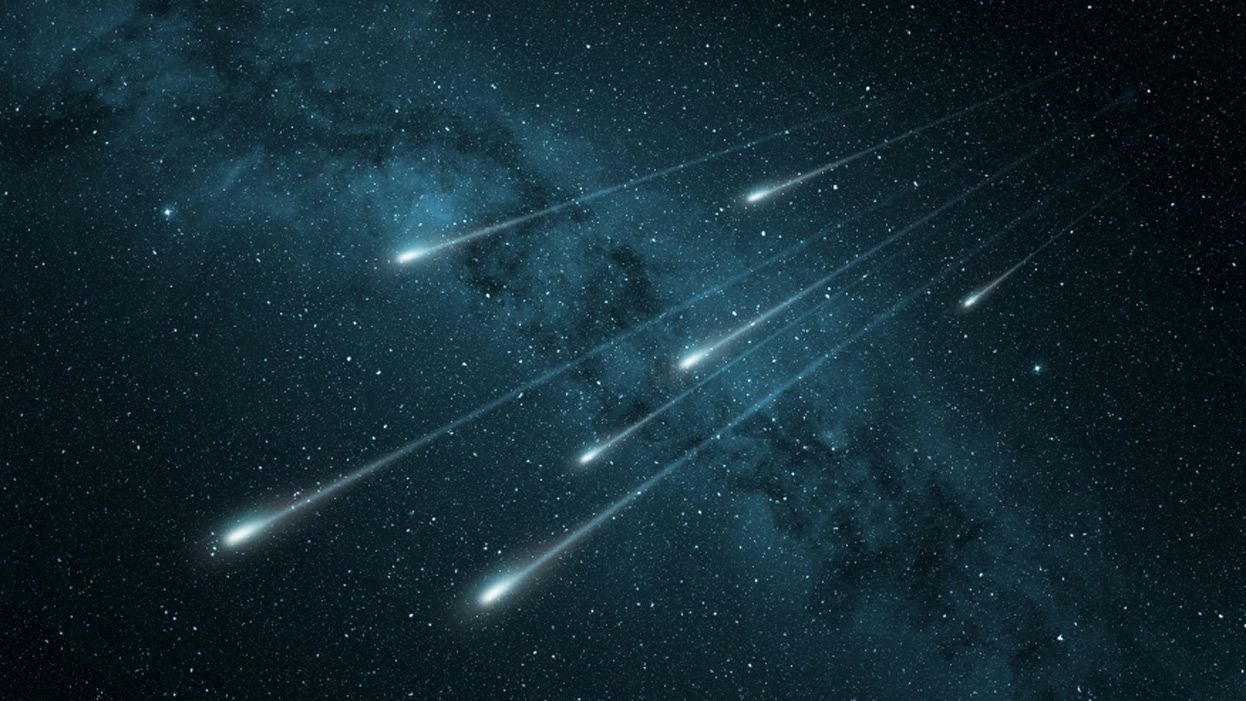 NOAA’s Geostationary Lightning Mapper Also Tracks Bolides
NOAA’s Geostationary Lightning Mapper Also Tracks BolidesBright meteors, or bolides, crash into the Earth’s atmosphere frequently, but most often occur over the oceans or other remote areas, and therefore are difficult to identify and study. SETI Institute scientists realized that the existing GOES satellites’ lightning trackers could be used to also find bolides. AI algorithms are being trained to discern bolides from other phenomena.
“Bolides are rare and, due to the limited observational areas of ground-based systems, very few bolides are detected from the ground—perhaps only a couple a year,” said Jeffrey C. Smith, a data scientist at the SETI Institute and the principal investigator on a cooperative project with the Asteroid Threat Assessment Project at NASA’s Ames Research Center. “Bolide explosions are also very quick, typically lasting just a fraction of a second, so very fast detectors are needed.”
- Honest Columnist: Looking for Lightning From Space, Finding Fireballs Entering Earth’s Atmosphere
- SETI.org: Using Machine Learning to Help Track Bolides (Really Bright Meteors)
- SETI Live: Keeping Track of Bolides (Really Bright Meteors)
 Master’s Program Enhances CAMS AI Pipeline with FDL and SpaceML
Master’s Program Enhances CAMS AI Pipeline with FDL and SpaceMLTwo student teams at New College of Florida took up the SpaceML/FDL challenge to enhance the automation pipeline for CAMS, successfully improving the prediction rate from the multiple camera input.
Known as the CAMS project (Cameras for Allsky Meteor Surveillance), a NASA-sponsored initiative with the SETI Institute and under the leadership of Dr. Peter Jenniskens, the effort is aimed at detecting meteors in the night sky through the use of data collected from multiple cameras watching night-time sky activity. Since 2011, 19 locations worldwide have been launched to collect such data that are intended to help astronomers and researchers to detect meteors, calculate their orbit trajectories and trace their origins. Many researchers and data scientists have tackled to date the challenging task of analyzing these large datasets with the help of data science and machine learning techniques.
- Medium.com: A “Practical Data Science” Approach to Detecting Meteors with CAMS
- SETI.org: CAMS India: A new video camera network for monitoring meteor shower activity
- SETI.org: CAMS: Cameras for Allsky Meteor Surveillance
 Unistellar Emphasizes Citizen Science in 2022
Unistellar Emphasizes Citizen Science in 2022Continuing its impressive roster of scientific achievements from amateur astronomers, including exoplanet transits, asteroid occultations, and near-earth object tracking, Unistellar plans future efforts in satellite tracking and space mission support.
“As an astronomer, when you arrive in a control room, everything is ready: you just enter the coordinates, or just the name of the target,” says [Franck] Marchis. “I always wondered why we don’t do that for amateur astronomers.”
- Universe Today: Unistellar’s Plans for Science and Astronomy in 2022
- SETI.org: Citizen Science Highlights in 2021
 Asteroid the Size of the Golden Gate Bridge Flies Past Earth
Asteroid the Size of the Golden Gate Bridge Flies Past EarthA long-observed asteroid, first discovered in 1974, hurtled by the Earth in January, just over one million miles above the planet. It has been extensively studied and posed no danger to Earth.
However, if it were to hit, the asteroid would cause a "complete catastrophe," destroying everything within a 25-mile radius, and the "amount of energy is 10,000 megatons of TNT. That's more than a nuclear blast," Franck Marchis, chief scientific officer at Unistellar and senior planetary astronomer at the SETI Institute, told USA Today.
- USA Today: A ‘potentially hazardous’ asteroid bigger than any building in the world to soon fly past Earth
- Washington Examiner: Bridge-sized asteroid passing by Earth on Tuesday
- Yahoo! News: A massive asteroid the size of the Empire State Building is about to pass Earth. Here’s how to track it.
- WishTV: Huge asteroid will fly past Earth today
- Yahoo! News: Huge, ‘Potentially Hazardous’ Asteroid To Fly By Earth
 Interstellar Flight – with Light?
Interstellar Flight – with Light?Solar or light sails aren’t a new idea, but using the pressure of photons to move spacecraft is gaining traction with current and future sail-powered experiments and missions preparing to fly. It may be most critical for exploration at interstellar distances.
But that’s impossible to do when you’re hauling a bunch of heavy liquid fuel, which is necessary for chemically propelled spacecraft but is also dead weight until you burn it. The trick “is to not bring your fuel with you,” [Eliot] Gillum said. “How do you do that? Light sails.”
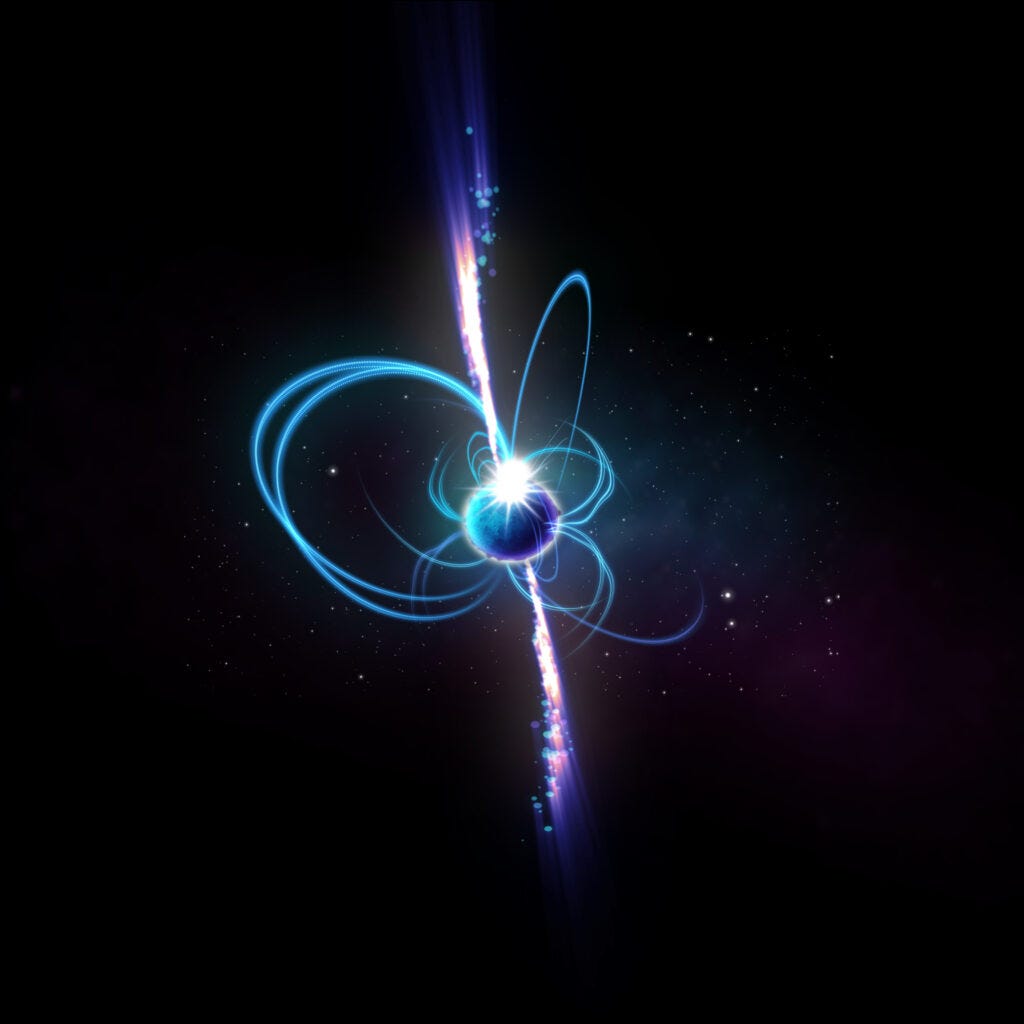 Unknown Energy Source “Not Aliens” – But What Is It?
Unknown Energy Source “Not Aliens” – But What Is It?An “unusual” object was detected recently by astronomers in Australia. It sent out extremely large energy bursts that lasted for a minute every 20 minutes, then went quiet for a few hours before repeating the cycle. It has been silent ever since. Seth Shostak comments that it is “obviously nature” and that other telescopes may discover other examples of this behavior.
"They have some idea what to look for, and that always makes it much quicker to find number two and then number three. At that point, when you found three of them, you can say OK, this is just another animal in the zoo, this is just another astronomical object," he said.
- USA Today: Astronomers discover ‘spooky’ object emitting energy in space. They don’t know what it is
:format(webp)/cdn.vox-cdn.com/uploads/chorus_image/image/70443441/padula_ringer_exoplanets_final.0.jpg) History of Exoplanet Search Fuels Hope for Exciting Science from JWST
History of Exoplanet Search Fuels Hope for Exciting Science from JWSTThe 30th anniversary of the discovery of the first exoplanet is upon us as the James Webb Space Telescope settles into its new home at L2.
“People talk about James Webb looking for oxygen in somebody’s atmosphere, but James Webb could also find super civilizations,” says SETI Institute astronomer Seth Shostak.
- The Ringer: The Past, Present, and Future of Faraway Worlds
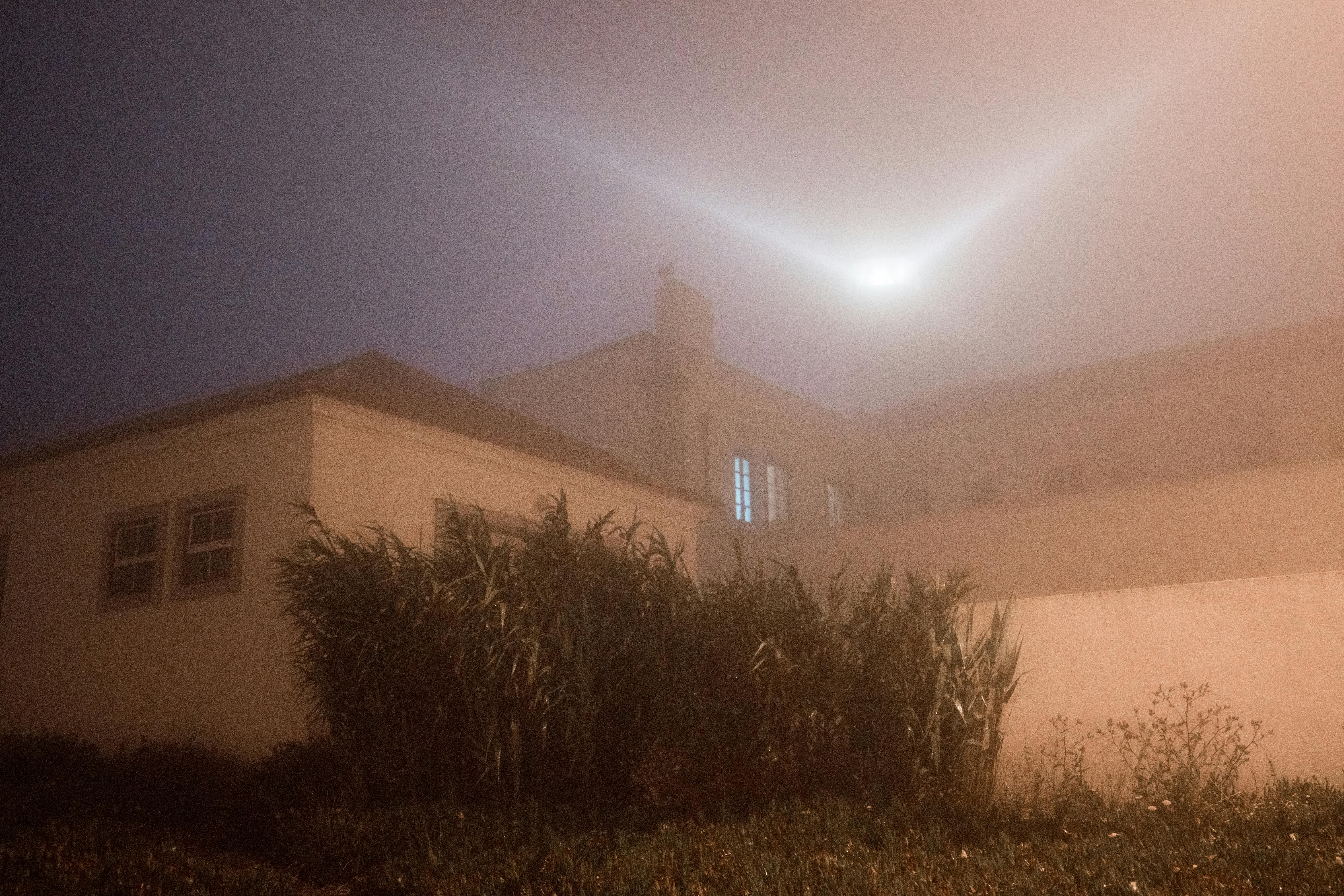 Galileo Project Looks for Aliens in Earth’s Sky
Galileo Project Looks for Aliens in Earth’s SkyHarvard astronomer Avi Loeb is working on a sky surveillance system using AI to scan the objects moving through our skies and screen out known items, such as birds and airplanes, in the hopes of laying the “UFO Question” finally to rest.
What's novel about the Galileo Project, [Seth] Shostak says, is its focus on hunting for aliens in Earth's atmosphere. Both the Galileo Project and the SETI Institute "are looking for indications of extraterrestrial intelligence," he adds. "But that's like saying that studying unknown fauna in the rainforest is similar to those who are hoping to find mermaids or unicorns."
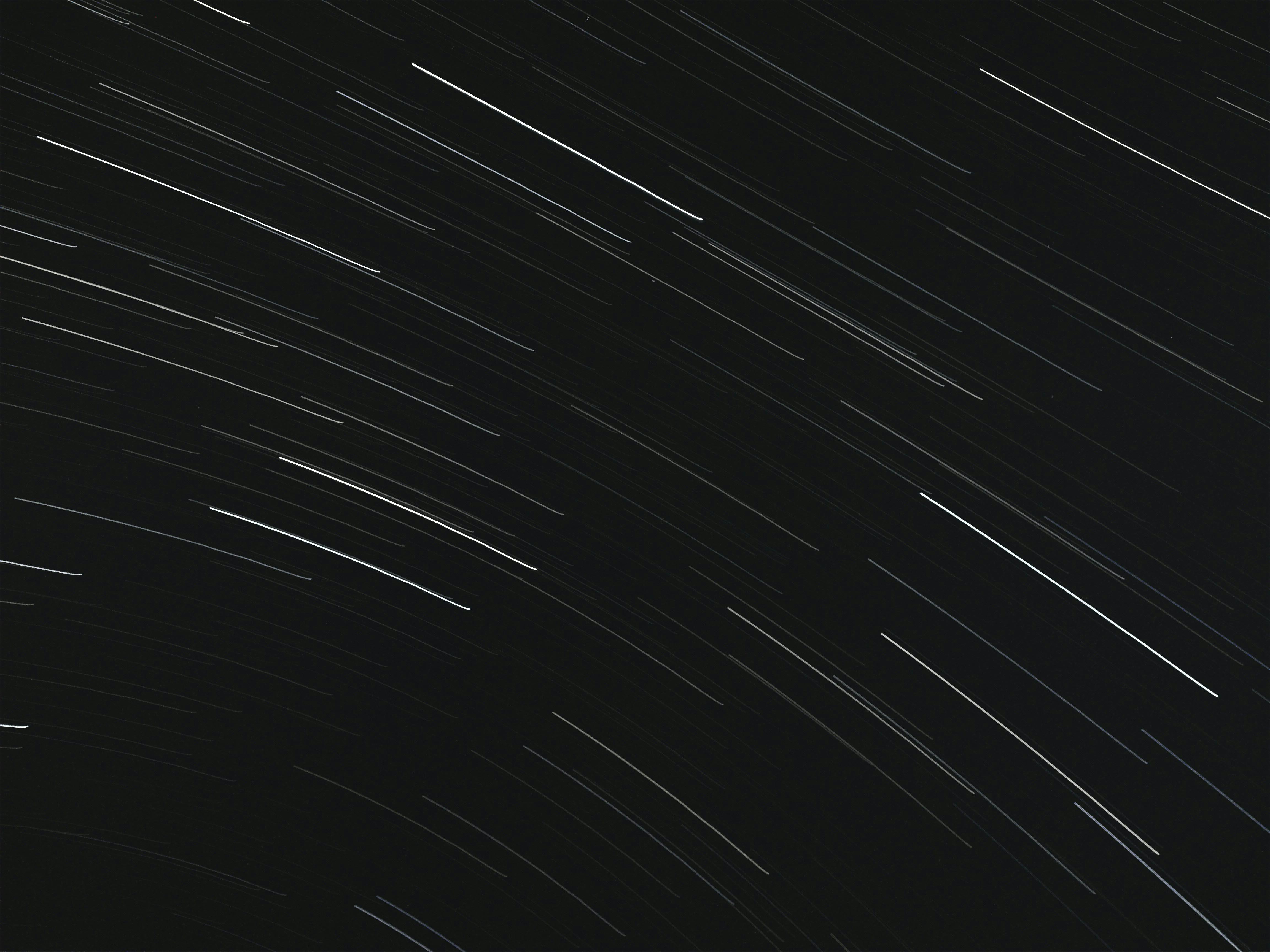 Light Speed
Light SpeedJust what is “light speed”, anyway, and what does Einstein’s edict that nothing can travel faster than light mean for space exploration?
"If Captain Kirk were constrained to move at the speed of our fastest rockets, it would take him a hundred thousand years just to get to the next star system," said Seth Shostak, an astronomer at the Search for Extraterrestrial Intelligence (SETI) Institute in Mountain View, California, in a 2010 interview with Space.com's sister site LiveScience. "So science fiction has long postulated a way to beat the speed of light barrier so the story can move a little more quickly."
Join hosts Seth Shostak and Molly Bentley each week as they explore emerging science and technology research.
Testing Your Metal
Catalytic converters are disappearing. If you’ve had yours stolen, you know that rare earth metals are valuable. But these metals are in great demand for things other than converters, such as batteries for electric cars, wind farms and solar panels.
We need rare earth metals to combat climate change, but where to get them? Could we find substitutes?
One activity that could be in our future: deep sea mining. But it’s controversial. Can one company’s plan to mitigate environmental harm help?
With guests Paul Dauenhauer, Chris Leighton, Renee Grogan
Make Space for Animals
Long before Yuri Gagarin became the first human to go into space, Laika, a stray dog, crossed the final frontier. Find out what other surprising species were drafted into the astronaut corps.
They may be our best friends, but we still balk at giving other creatures moral standing. And why are humans so reluctant to accept the fact that we too are animals?
With guests Jo Wimpenny, Taylor Maggiacomo, Alexander Stegmaier, Melanie Challenger
Bare Bones
You may not feel that your skeleton does very much. But without it you’d be a limp bag of protoplasm, unable to move. And while you may regard bones as rigid and inert, they are living tissue.
Bones are also time capsules, preserving much of your personal history. Find out how evolutionary biologists, forensic anthropologists, and even radiation scientists read them.
And why won’t your dog stop gnawing on that bone?
With guests Brian Switek, Ann Ross, Stanley Coren, Doug Bruge
More Big Picture Science episodes can be found at http://bigpicturescience.org/episodes.
SETI Institute hosts interview cutting-edge scientists each week on social media. Recent SETI Live episodes include:
Students Conduct Research and Design for New Lunar-Based Telescope
The SETI Institute teamed up with Louisiana State University (LSU) and Mississippi State University (MSU) to help students design the science program for AstronetX PBC's first lunar-based camera (L-CAM 1). L-CAM1 will capture images for research in astrophysics, planetary science and planetary defense. Dr. Tabetha Boyajian (LSU) leads the project. This week the team announced the science goals for L-CAM1, with a focus on characterizing asteroids and exoplanets. Join us as Beth Johnson discusses the project with Boyajian to find out how the students approached the project, why these science goals were selected and what the team hopes to learn.
Zen Gardens on Mars: A Conversation with Charles Lindsay
From creating a Zen garden on Mars to conducting sound experiments in the massive wind tunnel at NASA Ames, artist-adventurer Charles Lindsay’s work questions our understanding of time and consciousness. Lindsay is the founder of the SETI Institute’s Artist in Residence program and is now a visiting professor at Kyoto University of Arts. His sculptures, sound installations, and immersive environments, built from salvaged aerospace and bio-tech equipment, invite us to ponder ideas about technology, eco-systems, and semiotics.
A Massive Gas Giant Found Circling TOI-2180
A team of professional astronomers and citizen scientists has discovered a giant exoplanet orbiting the G5-type star TOI-2180, which is 381 light-years away from us. With a mass of 2.755 Jupiters, it takes 260.8 days to complete one orbit and is 0.828 AU from its star. Citizen scientists spotted the single-transit event of TOI-2180b in the data from NASA’s Transiting Exoplanet Survey Satellite (TESS). Using the Automated Planet Finder telescope at Lick Observatory, professional astronomers observed the planet’s gravitational tug on the star, which allowed them to calculate the mass of TOI-2180b and estimate a range of possibilities for its orbit. Hoping to observe a second transit event, they organized a campaign using fourteen different telescopes across three continents in the northern hemisphere. Over eleven days in August 2021, the effort resulted in 20,000 images of the star TOI-2180, though none of them detected the planet with confidence.
SETI Institute astronomer Franck Marchis sat down with citizen astronomer Daryll LaCourse and Paul Dalba, lead author of the project as well as a postdoctoral fellow at the University of California at Riverside and a SETI Institute affiliate, about this amazing discovery, the result of a collaboration between professional and amateur astronomers.
Videos of all past Facebook Live events can be found on our Facebook page, https://www.facebook.com/SETIInstitute/, or on our YouTube channel, https://www.youtube.com/SETIInstitute.





